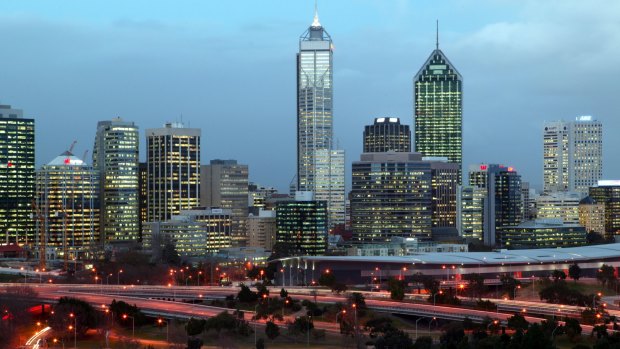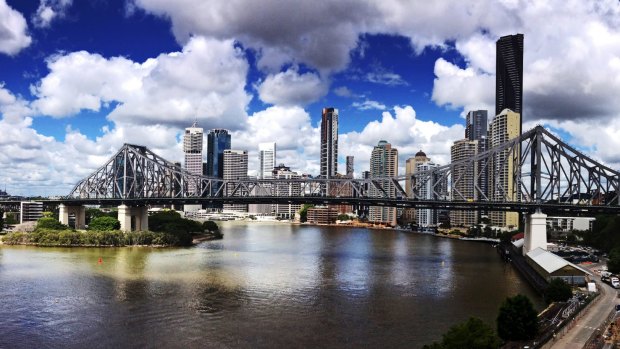This was published 9 years ago
Perth to leapfrog Brisbane as third largest city in Australia
By Kim Stephens
Perth is expected to leapfrog Brisbane to claim the title of Australia's third largest city by 2028, according to the official national statistics.
But a renowned demographer has said all is not lost for the River City.

A new survey shows 17 per cent of Perth residents view housing in their city as unaffordable.Credit: Erin Jonasson
While the once-sleepy West Australian capital is celebrating its anticipated status climb, a celebration demographer Bernard Salt jokingly described as akin to a "schoolyard showing off contest", direct comparison of the two city's projected populations does not tell the full story, he said.
Based on analysis of recent population growth figures, the Australian Bureau of Statistics predicts Perth will grow at a rate of 187 per cent between 2012 and 2061, putting its 2050 population at 4.6 million, according to Mr Salt.

"Brisbane by 2050 will be better known by its region of South East Queensland." Credit: Glenn Hunt
Brisbane's population in that year is expected to reach 4.2 million.
"Brisbane by 2050 will be better known by its region of South East Queensland," he said.
"There will be 4.2 million people in Brisbane, 1.2 million on the Gold Coast and half a million on the Sunshine Coast, which takes you to over six million.
"The Perth figure of 4.6 million is technically nearly half a million more than Brisbane, but the reality is the Brisbane metropolitan area services a population far bigger than the city limits, which makes it a different beast to Perth.
"The consumer spending market, the housing market, etcetera is bigger, which gives it a technical advantage."
Where the challenges for the regional population sprawl would come, he said, was in major infrastructure such as roads, rail lines and airports.
"The disadvantage is it's hard to manage infrastructure," he said.
"It's easier when you have 6 million people living together nice and tight. There are not as many kilometres of railway and roads. When you spread it out across a broad canvas, the tax generated by six million people has to go much further.
"But the advantage is quality of life. You can live the regional city lifestyle but have access to a big city job."
Brisbane Lord Mayor Graham Quirk, also the chairman of the South East Queensland Council of Mayors, told 612 ABC Brisbane ongoing cohesion among the regional councils was vital for ensuring appropriate federal infrastructure investment.
At the top of the priority list, he said, was an upgrade to the current traffic bottleneck connecting Brisbane with Logan and the Gold Coast, the Pacific Motorway.
"What we do need to do is continue to work co-operatively as a group of mayors in south east Queensland to ensure that growth that does occur occurs in planned way," he said.
"Regional planning is very important but also co-operation in terms of growth, understanding where the growth is and working co-operatively, rather than on a boundary based methodology."
Mr Salt said the anticipated combined population of Brisbane, the Gold and Sunshine coasts in 2050 would be equivalent to the current day population of Sydney, Newcastle and Wollongong in New South Wales.
The lifestyle difference, he said, in the dynamic of the New South Wales capital with its regional satellite cities in comparison to Brisbane with its two coastal cities, was that the Gold and Sunshine coasts emerged from the lifestyle, not industrial sector.
It gives the region a significant marketing edge moving forward, he said.
"The smaller cities either side of Melbourne and Sydney are manufacturing cities, whereas outside Brisbane they are lifestyle cities created by cars and commuting where people want to live," he said.
"They are part of the greater metropolitan area.
"The big issues for Brisbane will be how do you manage a region of six million people."